Many people may not be aware that sandwiches are high risk food illness items.
Sandwiches can contain perishable foods (those likely to spoil or become unsafe – if not kept refrigerated) or raw vegetables – that if not washed – can harbor dangerous bacteria.
Likewise, if sandwiches are not prepared, packed, and stored properly – bacteria growth can occur and cause food illness. And during warmer months bacteria multiply faster – so preparing food for outdoor travel is more challenging.
August is National Sandwich Month. It is a great time not only to try a different type of sandwich, but a reminder to practice the safe preparation, packing, and transport of sandwiches to work or school.



Perishable Foods Cause Risk for Foodborne Illness
Perishable food includes meat, poultry and eggs – and must be kept cold while commuting. After arriving at school or work, perishable food must be kept cold until lunchtime. Without proper storage, i.e. improper time and temperature control, pathogens may grow and multiply and cause food poisoning.
- Learn about proper hygiene, cross contamination, cold and hot food safety, foodborne pathogens, and best practices to prevent foodborne illness.
- Food Manager Training & ANSI Certification - $99.00
- Food Handler Training - only $7.00!
- HACCP Training: 16hr/4hr/1hr
- Food Allergy Training - $15.00
- Enter Promo "train10off" at Checkout
The Temperature Danger Zone
The temperature “Danger Zone” is the temperature range between 40°F and 140°F in which bacteria that cause foodborne illness can begin to multiply. At temperatures of 90°F and above, they multiply even more rapidly.
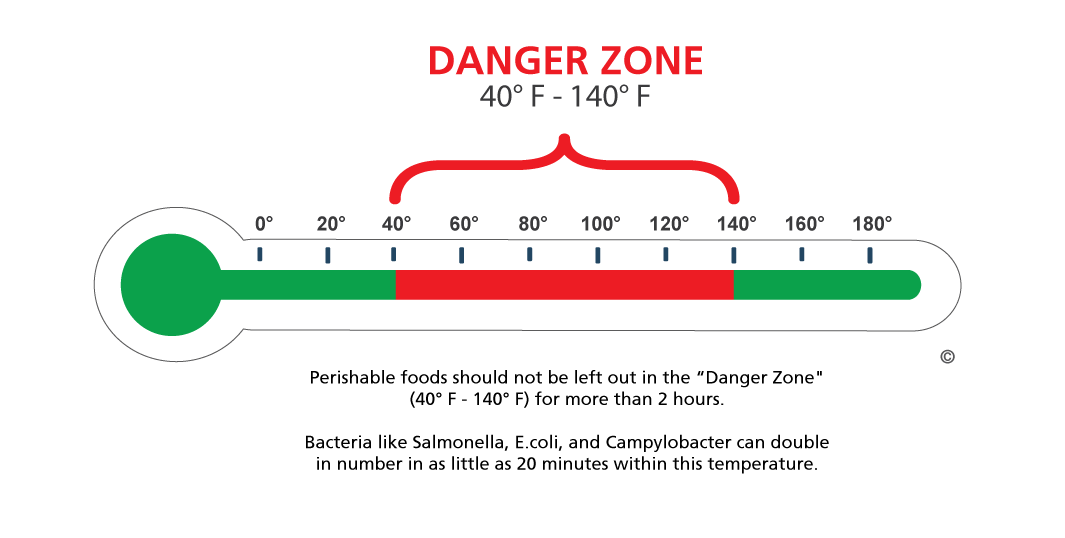


2 Hour Rule
Potentially hazardous food that remains in the temperature “Danger Zone”, 40-140 °F, for more than 2 hours should be discarded – 1 hour if the temperature is above 90 °F .
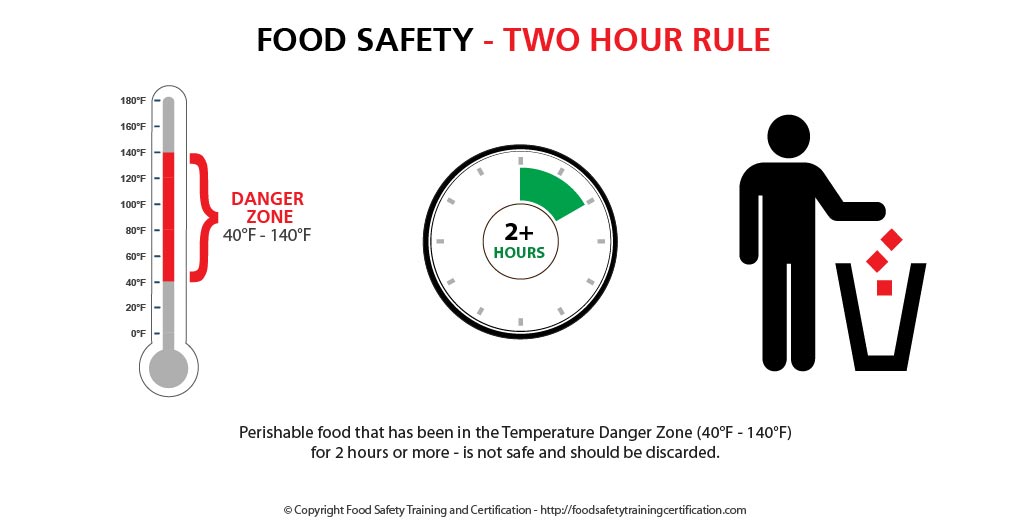


Sandwich Food Safety Key Concepts
Here are some guiding food safe principles and procedures that will avert a possible sandwich food illness:
Choose Sandwich Type Wisely
Before even preparing a sandwich, think about the sandwich choice and the environment. First, think about timing: When will you eat the sandwich, and how long will it be sitting around? Then think about temperature: Will it be traveling in sweltering heat or be tossed around in a backpack, or will there be ice packs or even refrigeration?
These things should factor into what kind of sandwich you make. If you know that you can’t keep the sandwich cold and it’ll be a hot day, stay away from egg salad, mayonnaise, or fresh cheeses – since they’re highly perishable.
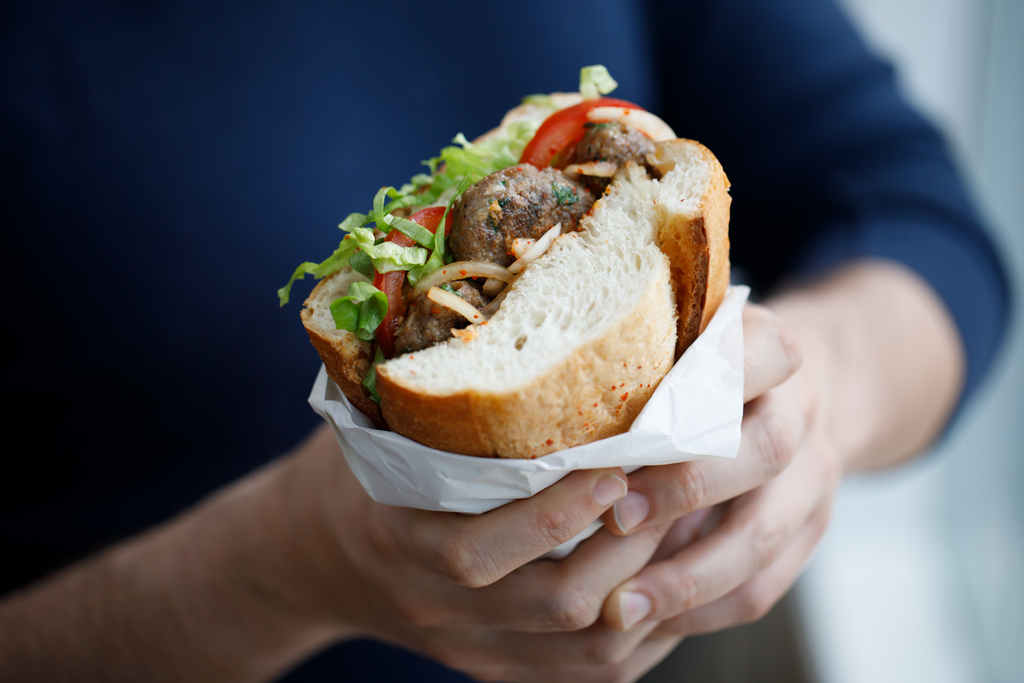


Preparation – Clean
Before beginning making a sandwich, make sure to wash your hands with soap and warm water for 20 seconds.
Always clean vegetables because they can contain danger bacteria. Lettuce, tomatoes and cucumbers are the most common foods that can carry E.coli. Washing will help remove bacteria, including E.coli, from the surface of fruit and vegetables.
Wash cutting boards, dishes, utensils, and countertops with hot, soapy water after preparing each food item and before you go on to the next item. Harmful bacteria can spread throughout the kitchen and get onto cutting boards, utensils, and countertops.
Preparation – Don’t Cross-Contaminate
When using a cutting board for food that will not be cooked, such as bread, lettuce, and tomatoes, be sure to wash the board after using it to cut raw meat and poultry. Consider using one cutting board for fresh produce and a separate one for meat and poultry.
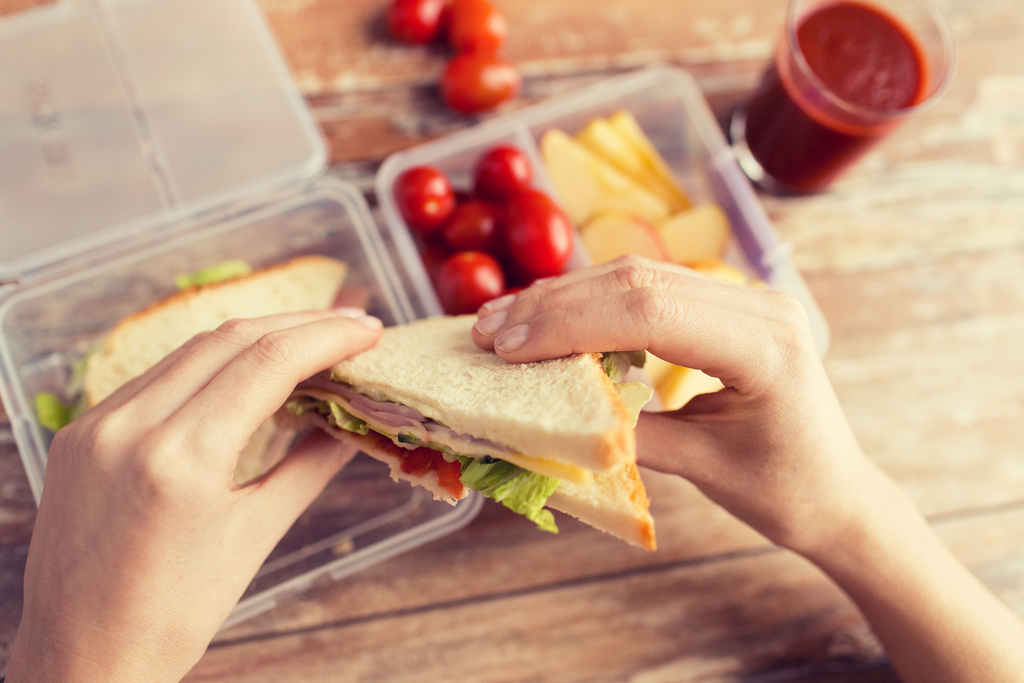


Packing – Only What is to be Consumed
Pack just the amount of perishable food that can be eaten later. That way, there won’t be a problem about the storage or safety of leftovers. After lunch, discard all leftover food, used food packaging, and paper bags. Do not reuse packaging because it could contaminate other food and cause foodborne illness.
Packing – Keep Food Cold
To keep sandwiches cool away from home, include at least two cold sources. You can use two frozen gel packs (not smaller than 5×3-inches each) or combine a frozen gel pack with a frozen juice box or frozen bottle of water. Freeze gel packs overnight. When packing your bag lunch, place them on top and bottom of the perishable food items to keep them cold.
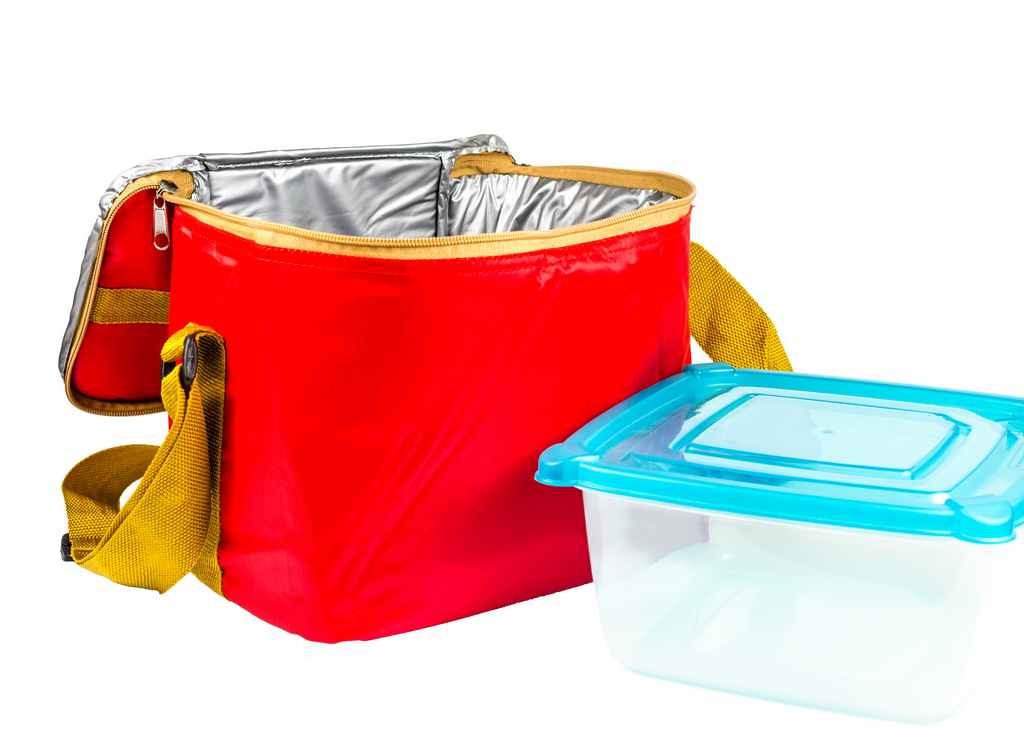


At Work or School – Store in Cold Place
When arriving at work or school, store perishable items in a refrigerator promptly. When you place your insulated bag in the refrigerator, leave the lid or bag open so that cold air can keep the food cold.
Some food is safe without a cold source. Items that don’t require refrigeration include whole fruits and vegetables, hard cheese, canned meat and fish, chips, breads, crackers, peanut butter, jelly, mustard, and pickles.
Summary
Now that you know these basic food safety sandwich principles, you can choose, prepare and pack your sandwiches safely, confident that they’ll be food safe when it comes time to eat.






